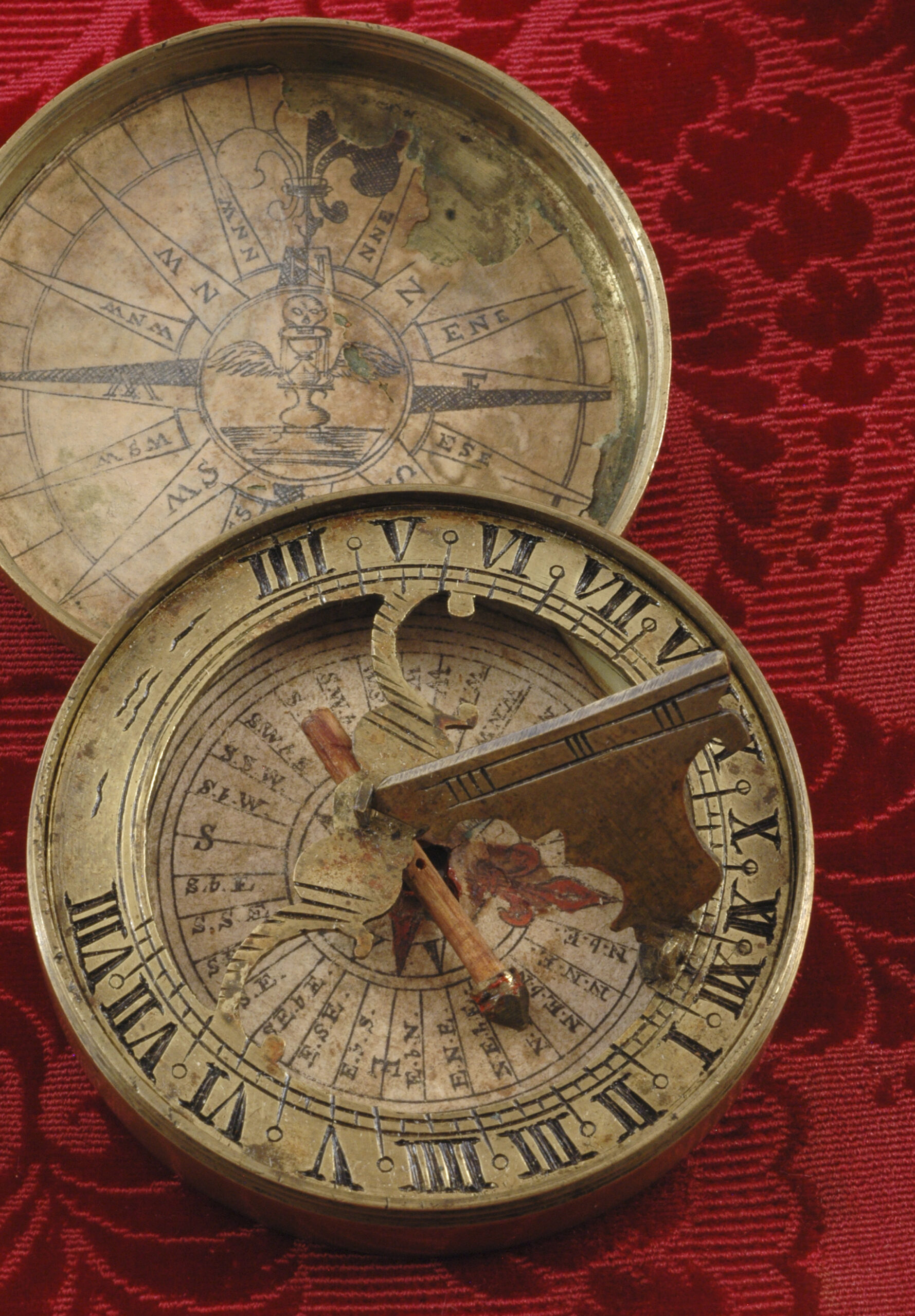Roger Williams’s Compass
This is a round brass magnetic compass used by Roger Williams on his journey from Massachusetts to Rhode Island in 1636. The compass has a screw top and is engraved with letters that represent Roman numerals around the edges. A card in the compass marks the thirty-two directions, based on the directions of major winds. […]
This is a round brass magnetic compass used by Roger Williams on his journey from Massachusetts to Rhode Island in 1636. The compass has a screw top and is engraved with letters that represent Roman numerals around the edges. A card in the compass marks the thirty-two directions, based on the directions of major winds. North is marked by a fleur-de-lis, which symbolizes light and purity. The top of the compass is decorated with sixteen wind divisions and, in the center, a symbol of a winged hourglass topped by a skull. A replica of the compass is currently on view at the Charter Museum at the Rhode Island State House.
Close Looking Questions:
What do you notice first? Do you see any symbols? What do you think they mean?
How would someone have used this object? What might this object tell us about the person who owned it?
Land Use Differences in Native and English Communities
Essay by Ann Daly, Ph.D. Candidate in the Department of History at Brown University
It was a very cold winter in 1636 when Roger Williams left the Massachusetts and Plymouth colonies. Even Narragansett Bay froze because of the cold. He was afraid of getting in trouble for his religious and political beliefs. For fourteen weeks, Williams went from Native village to Native village with very little food and not enough warm clothes. He did not talk much about those weeks, only saying that “ravens fed me in the wilderness.”1John M. Barry, Roger Williams and the Creation of the American Soul: Church, State, and the Birth of Liberty, (New York: Viking Press, 2012) 214.
Luckily, Williams had a special tool called a compass that helped him find his way through the snowy wilderness. He used it on his seventy-mile journey from Boston to the place which later became Providence. When spring arrived, he got into his canoe, paddled into Narragansett Bay, and looked for a good place to build his town. During his journey, Williams saw new places and learned new things about nature.
The English settlers who came to New England were amazed by the landscapes they found. England, where they came from, was a small and crowded island with few forests. In contrast, New England had vast woods and oceans full of fish, which seemed very rich to them. One English fur trader, Thomas Morton, even said, “if this land be not rich, then is the whole world poor.”2Ibid, 180.
Williams saw that the Native people took care of the forests and land. The New England landscape had different environments, like forests, ponds, and shorelines full of clams and oysters. Before the Europeans came, Native people moved around to use these resources. Some Native groups farmed, while others hunted and gathered food. They even burned the woods to make it easier to move through and manage the land.
Although Native land practices were similar to the English, they had different ideas about using natural resources. Native people used the land to meet their needs but only took what they needed. The English, on the other hand, wanted the land to produce a lot of things they could sell. This difference affected the land and Native culture. The English demand for furs led to overhunting, and their desire for wampum made Native people settle in one place near the shells needed for production. By bringing their economy and culture to lands that could not support them, the English changed and harmed the environment.
Terms:
Wampum: A currency of clamshell beads
Reading Comprehension Questions:
Why did Roger Williams leave the Massachusetts colony in 1636?
What different types of environments were in New England?
How did the Native people and English settlers use the land and its natural resources differently?
- 1John M. Barry, Roger Williams and the Creation of the American Soul: Church, State, and the Birth of Liberty, (New York: Viking Press, 2012) 214.
- 2Ibid, 180.

